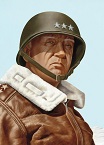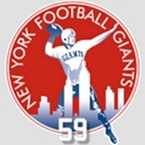John 3rd
Posts: 17178
Joined: 9/8/2005
From: La Salle, Colorado
Status: offline

|
Been percolating on a slightly more 'interesting' Allied deployment favored by Adm Kimmel and pushed by the Hepburn Report. The premise is that the United States, acting a greater concern regarding Japan, works to deploy and enhance base construction and garrisoning at a slightly faster rate then IRL. Anything NEW is listed with the base. You'll see some troops, shipping, base modifications, and supply/fuel additions. Nothing HUGE but enough to really provide the Allied player a few more options as well as a few rude surprises for the Japanese player.
The Hepburn Board. -- On June 7, 1938, acting Secretary of the Navy Charles Edison appointed a board consisting of Rear Admiral Arthur J. Hepburn, Commandant of the Twelfth Naval District, as senior member, and Rear Admiral Edward J. Marquart, Captain James S. Woods, Captain Arthur L. Bristol, Jr., Captain Ralph Whitman, C.E.C., as members, with Lieutenant Commander William E. Hilbert as recorder.
The board, which became known as the Hepburn Board, made an exhaustive survey of the strategic needs in connection with the naval defense of the United States and of existing facilities for meeting those needs. In an outstanding report submitted to Congress on December 27, 1938, the board recommended the establishment of new air bases and the expansion of existing bases to provide three major air bases on each coast, one in the Canal Zone, and one in Hawaii; with outlying operating bases in the West Indies, Alaska, and our Pacific island possessions. The board also recommended that the naval air training station at Pensacola be greatly enlarged and that possibly an additional air training station be established at Corpus Christi, Texas; new submarine bases be established in Alaska and the mid-Pacific area, and several existing stations be improved or retained. Some additional facilities were suggested for the existing destroyer bases at Philadelphia and San Diego. No new mine bases were considered necessary, but certain deficiencies were noted in existing bases. A general priority schedule was set up, based on the necessity for providing facilities when the ships and aircraft authorized by the Vinson bill would be completed. In addition, there was a list of projects, considered to be of immediate strategic importance, which should be undertaken at the earliest practicable date. These items were: (1) improvement of air facilities at Kaneohe Bay. Hawaii; (2) submarine and air bases at Wake Island, Midway Island, and Guam; (3) air facilities at Johnston Island and Palmyra Island; (4) air and submarine bases at Kodiak and Sitka; (5) and submarine facilities at San Juan, Puerto Rico.
In making its studies and formulating its report, the Hepburn Board drew upon the great mass of plans and projects that had been developed by the various bureaus of the Navy as being desirable. As Admiral Hepburn testified at the Congressional hearings on his report, "I would say that every item that the board has suggested has been considered in the past some time by one department or another or by the Joint Board involved, and they have been put down as projects to be attained when they can get the money."4 The board performed an invaluable service in taking all these proposals and, within the framework of definite strategic necessities and available facilities, formulating a comprehensive and coordinated plan for development, especially in the field of aircraft.
Although the estimated cost of the programs set up by the Hepburn Board report was $326,216,000, the first request for authorization from Congress to initiate the program was for $65,000,000 to cover a three-year program. However, events were mounting rapidly, and by the time this program was well under way it had been overshadowed by the need for even greater and more expensive developments. In the general defense program that was to begin a year later, practically all the board's recommendations, except those relating to Guam, were carried out and contributed materially to our position when war actually developed.
December 7, 1941
Changes in Deployment and Bases
NoPac
Umnak
Convoy: APs: Henry Allen, Examiner, Santa Inez, Santa Barbara, and 3 AK
Escort: CL Concord and DDs Harwood, Decatur, Hart, and Smith
47th Construction Regiment, and 1/153 Inf Bn
Supply: 2,500 Fuel: 250
Dutch Harbor
VP-24 (6 PBYs)
Cold Bay
808th Aviation Eng Bn and 3/153 Inf Bn (from Annette Isle)
Fort-1
Supply: 1,500 Fuel: 150
Imagine this pair of Task Forces first arriving at Cold Bay then unloading, moving on to Dutch Harbor and unloading supplies/fuel, and finally Umnak having just finished unloading on Dec 7th.
CenPac
Pearl Harbor
2nd USMC Para Bn, 2nd Pioneer Bn, 34th Inf Reg, and 198th Field Artillery
Midway
Task Force 419: 6 PT boats
VP-21 (11 PBYs)
1/298 Inf Bn
P-1 AF-3 Fort-2
Supply: 3,500 Fuel: 1,000
Wake
VP-14 (12 PBYs)
P-1 AF-2 Fort-2
Supply: 2,000 Fuel: 1,000
Canton
2/298 Inf Bn
P-2 AF-1 Fort-2
Supply: 1,800 Fuel: 8,000
Christmas Isle
3/298 Inf Bn
P-1 AF-0 Fort-1
Supply: 1,500 Fuel: 800
SoPac
Pago Pago
TF 421 (6 PT Boats)
VMSB-231 (18 Vindicators) and 51st/16th PS (18 P-40)
2nd and 7th Marine Def Bn, 104th USN Base Force, and 30th Base Group
P-2 AF-2 Fort-2
Disbanded in Port:
Convoy: APs: Pres Polk—Madison—Monroe, AKs Alcoa Pathfinder, Shooting Star, and Ruth Alexander, 4 SS (S-Boats), AS Fulton, and an AM
Escorts: CLs Detroit and Raleigh with DDs Oreleck, SP Lee, Woodbury, and Delphy
The SCOUTING FORCE Near Jarvis Isle
CLV Jacksonville (12 Buffalo and 6 SBD)
BCs Ranger and Constellation
CAs Indianapolis and Salt Lake City
DD: 6
CV Enterprise and Lexington's TFs begin in their historical locations.
< Message edited by John 3rd -- 8/28/2017 11:20:54 PM >
_____________________________
|
 Printable Version
Printable Version



















 New Messages
New Messages No New Messages
No New Messages Hot Topic w/ New Messages
Hot Topic w/ New Messages Hot Topic w/o New Messages
Hot Topic w/o New Messages Locked w/ New Messages
Locked w/ New Messages Locked w/o New Messages
Locked w/o New Messages Post New Thread
Post New Thread